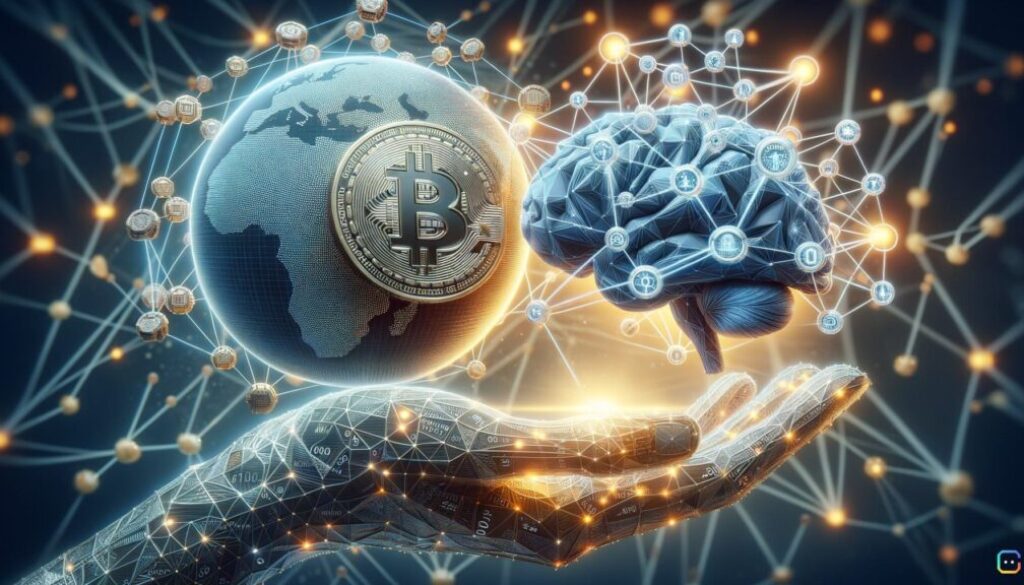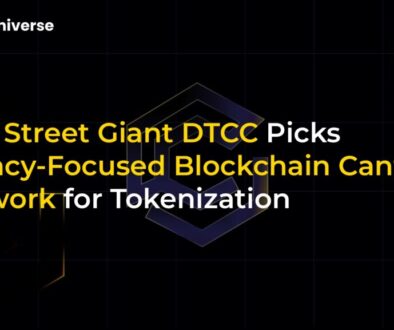The Convergence of Blockchain and AI: A $3.5 Trillion Market

The Convergence of Blockchain and AI: A $3.5 Trillion Market
Imagine a world where the very infrastructure that powers our daily lives — from internet connectivity to energy grids — is owned and operated not by a few large corporations, but by a global community. This isn’t a futuristic fantasy; it’s the rapidly emerging reality driven by the convergence of blockchain and artificial intelligence (AI).
The World Economic Forum (WEF) has made a bold prediction: the decentralized physical infrastructure network (DePIN) market, at the heart of this revolution, could skyrocket to a staggering $3.5 trillion within the next three years. Currently valued between $30 billion and $50 billion with approximately 1,500 active projects worldwide, this sector is poised for exponential growth by 2028. A key catalyst for this expansion is the rise of Decentralized Physical AI (DePAI), which is redefining how AI interacts with infrastructure and data, breaking free from centralized limitations.
Understanding DePIN and DePAI
At the core of this predicted boom are two powerful concepts: DePIN and DePAI.
What is DePIN?
Decentralized Physical Infrastructure Networks (DePINs) represent a groundbreaking shift in how real-world infrastructure is built, maintained, and owned. Traditionally, large companies own and operate critical infrastructure. DePINs, however, leverage blockchain technology to create decentralized networks where:
- Individuals and companies can contribute real-world resources, such as internet bandwidth, storage space, or energy.
- In return for their contributions, participants receive cryptocurrency-based rewards.
- This model fosters community ownership and incentivizes the widespread deployment of infrastructure, from wireless networks to energy grids and even sensor networks for mapping.
This approach democratizes access and ownership, creating a more resilient and efficient infrastructure landscape.
What is DePAI?
Decentralized Physical AI (DePAI) takes the DePIN concept a step further by integrating AI directly with this decentralized physical infrastructure. DePAI utilizes decentralized networks for machine learning, effectively breaking away from the constraints and biases often associated with centralized data and AI models. This convergence allows for:
- The training of AI models using real-world data collected through DePINs, leading to more accurate and diverse AI applications.
- Revolutionizing various fields, including autonomous vehicles, robotics, and smart city applications.
- Ensuring that the benefits of AI development and application are distributed across a global community, rather than concentrated in a few hands.
Key DePIN Use Cases
DePINs are not just theoretical; they are actively transforming various sectors by decentralizing essential services. By sharing resources like energy, storage, and computing power across a distributed network, DePINs are moving us away from centralized control. Here are some of the most impactful use cases:
- Decentralized Computing Networks: Projects like Akash offer a cloud-computing marketplace, allowing users to buy and sell cloud resources. Similarly, Render Network decentralizes GPU cloud rendering, connecting those who need rendering services with individuals who have idle GPU power. This creates a more efficient and accessible computing landscape.
- Decentralized Wireless Connectivity (DeWi): These networks allow individuals to host hotspots and provide internet connectivity, earning crypto rewards. This can expand internet access in underserved areas and offer more resilient network alternatives.
- Data Storage: Decentralized storage networks reduce reliance on energy-intensive central data centers by spreading data across numerous nodes globally. This enhances data security, censorship resistance, and often reduces costs.
- Energy Generation and Distribution: DePINs can facilitate peer-to-peer energy trading and incentivize the deployment of renewable energy sources, creating more localized and sustainable energy grids.
- IoT Deployments and Sensor Networks: From environmental monitoring to real-time mapping, DePINs enable vast networks of connected devices to collect and share data in a decentralized manner, fostering new applications in smart cities and beyond.
Growth Drivers and Market Potential
The projected surge of the DePIN market to $3.5 trillion by 2028 is not an arbitrary figure; it’s driven by several powerful forces:
- The Synergy of AI and Blockchain: This convergence is the primary catalyst. Blockchain provides the secure, transparent, and incentivized backbone for decentralized infrastructure, while AI leverages the vast, real-world data streams generated by these networks to create intelligent, autonomous systems. This synergy enhances existing ICT systems, promoting unparalleled efficiency and unique functionalities.
- Democratized Ownership and Efficiency: DePIN’s model of democratized ownership incentivizes individuals and organizations to contribute resources and operate assets, earning cryptocurrency in return. This distributed model is inherently more efficient and resilient than traditional centralized systems.
- Transformation of Computing: Experts widely believe that DePIN adoption will fundamentally transform computing itself, fostering a more distributed, resilient, and open environment for data processing and AI model training.
- Increasing Adoption Across Industries: As the benefits of decentralization become clearer, more industries are exploring and integrating DePIN solutions, leading to broader market penetration and real-world utility.
While the DePIN market cap is currently around $20.4 billion, its rapid expansion signals substantial growth opportunities for investors, developers, and everyday users alike. The vision of a truly distributed internet, powered by community-owned infrastructure and intelligent AI, is quickly becoming a reality.
The Future is Decentralized and Intelligent
The convergence of blockchain and AI through DePIN and DePAI is more than just a technological trend; it represents a paradigm shift in how we build and interact with the physical world. By empowering individuals to contribute to and benefit from global infrastructure, this movement promises a future that is more equitable, efficient, and resilient. As the market continues its rapid ascent towards that $3.5 trillion valuation, the impact of decentralized physical infrastructure and AI will undoubtedly reshape industries and everyday life as we know it.


